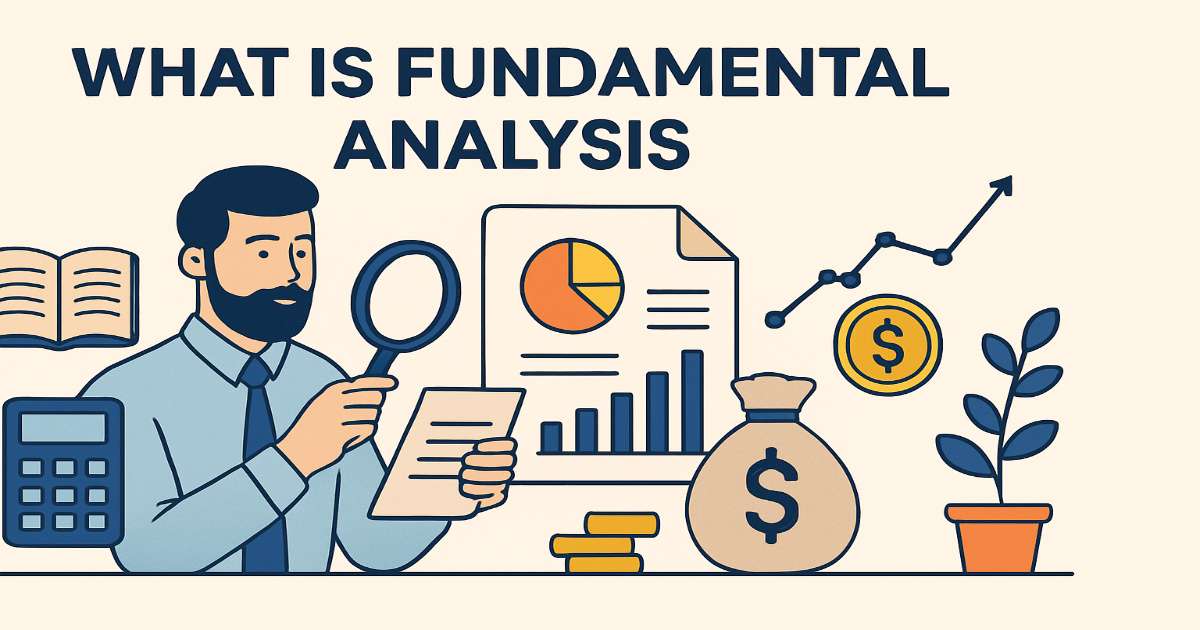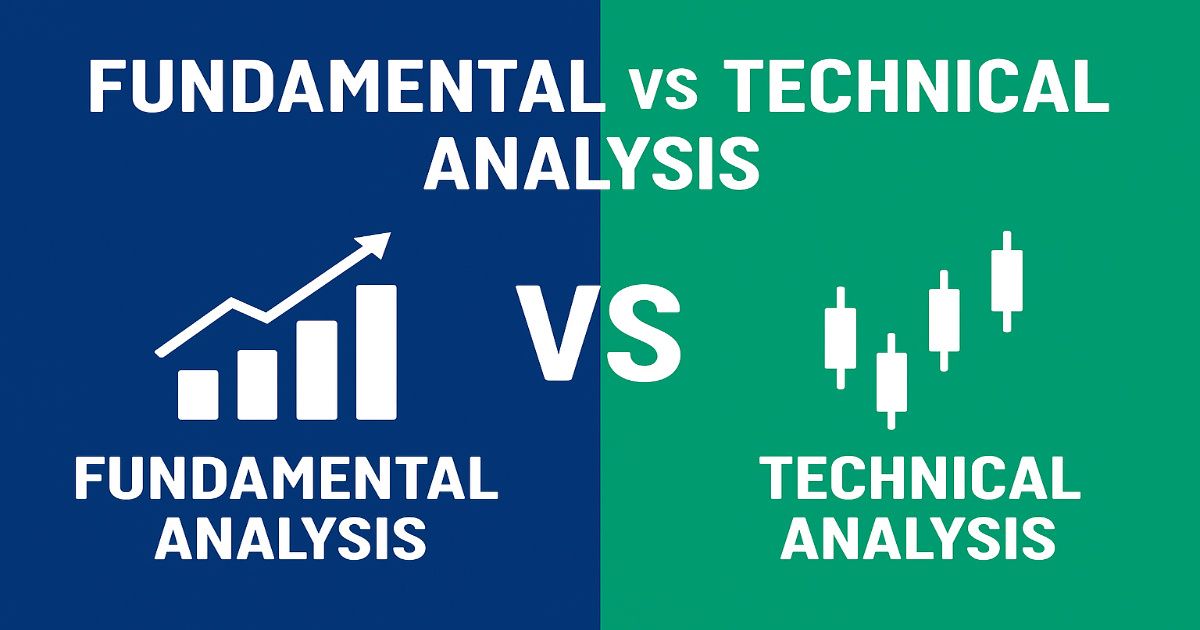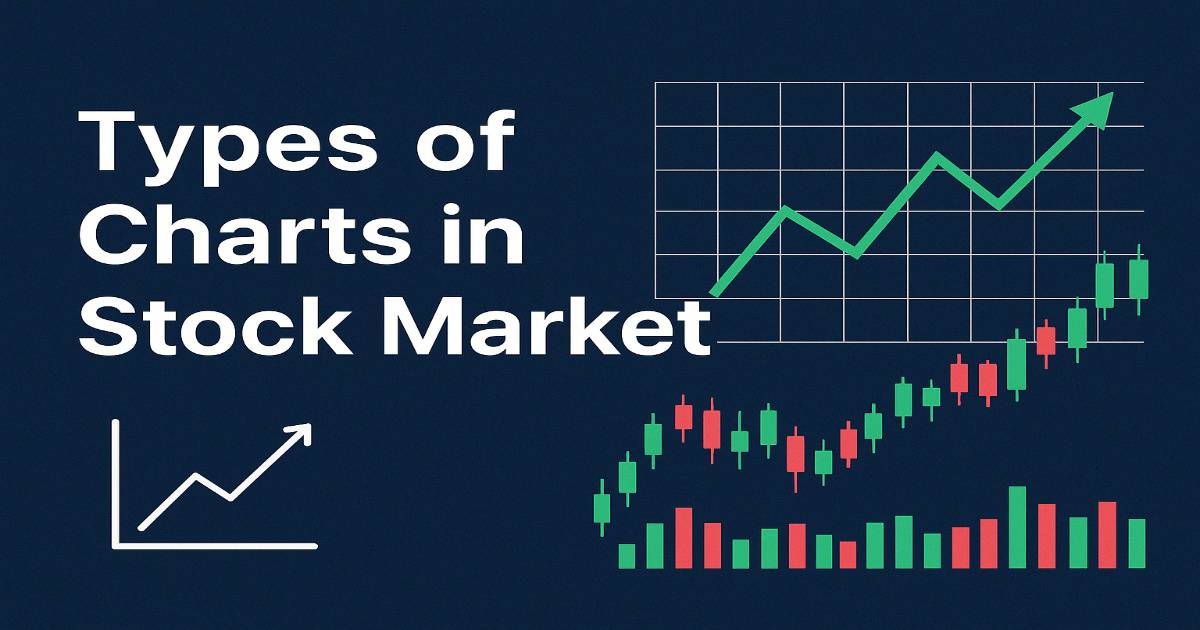Every investor wants to buy low and sell high. But how do you know whether a stock is undervalued or overvalued? The answer lies in fundamental analysis — a powerful strategy that helps you evaluate a company’s intrinsic value, financial health, and future growth potential.
While technical analysis looks at price charts and trends, fundamental analysis dives deep into the company’s actual business performance. In this detailed guide, we’ll explain what fundamental analysis is, why it matters, how to use it effectively in trading, and the tools and strategies you need to get started in 2025.
What is Fundamental Analysis?
Fundamental analysis is the process of evaluating a company’s financial statements, business model, management, economic environment, and industry conditions to determine its real worth or intrinsic value.
The goal is simple:
Buy a stock when its market price is below its intrinsic value (undervalued), and sell when it’s above (overvalued).
It’s a long-term investment strategy rooted in rational decision-making, not emotional market reactions. It answers questions like:
- Is the company profitable?
- How fast is it growing?
- Is it too much in debt?
- Does it have a competitive edge?
- How is the overall industry performing?
Why is Fundamental Analysis Important?
In the chaotic world of stock markets, price alone doesn’t tell the whole story. A ₹500 stock could be cheaper than a ₹100 stock — if the ₹500 stock has stronger earnings, lower debt, and better growth prospects.
Fundamental analysis helps investors:
- Make informed and data-driven investment decisions
- Understand the long-term potential of a business
- Identify undervalued or overvalued stocks
- Avoid falling for hype and pump-and-dump schemes
- Build a diversified, quality portfolio for wealth creation
Legendary investors like Warren Buffett, Charlie Munger, and Benjamin Graham have built fortunes using fundamental analysis.
Key Pillars of Fundamental Analysis
Fundamental analysis is built on three major pillars:
1. Company Analysis (Micro Level)
You analyze the company’s financials, management, business model, competitive position, and growth prospects.
2. Industry Analysis (Meso Level)
You study the broader industry trends, market demand, competitors, and regulatory landscape.
3. Economic Analysis (Macro Level)
You consider macroeconomic indicators like GDP growth, inflation, interest rates, monetary policy, and global trends.
Together, these levels offer a complete picture of where the company stands and how it is likely to perform in the future.
Types of Fundamental Analysis
There are two core approaches:
1. Qualitative Analysis
Non-measurable factors that affect a company’s value:
- Business model
- Leadership and management
- Brand value
- Customer loyalty
- Market share
- Industry reputation
2. Quantitative Analysis
Measurable data from financial statements:
- Revenue, expenses, net profit
- Assets and liabilities
- Earnings per share (EPS)
- Ratios like P/E, ROE, Debt/Equity, etc.
Let’s now explore the most important financial metrics used in fundamental analysis.
Key Financial Metrics for Fundamental Analysis
1. Earnings Per Share (EPS)
EPS = Net Profit / Total Outstanding Shares
A higher EPS means the company is generating more profit per share.
2. Price-to-Earnings (P/E) Ratio
P/E = Stock Price / EPS
Compares stock price to earnings. A lower P/E may indicate undervaluation.
3. Price-to-Book (P/B) Ratio
P/B = Stock Price / Book Value per Share
Shows how the market values the company’s net assets.
4. Return on Equity (ROE)
ROE = Net Income / Shareholders’ Equity
Measures how efficiently a company uses shareholders’ funds.
5. Debt-to-Equity (D/E) Ratio
D/E = Total Debt / Total Equity
Indicates financial risk. Lower is generally better.
6. Current Ratio
Current Ratio = Current Assets / Current Liabilities
Shows liquidity and short-term financial strength.
7. Free Cash Flow (FCF)
FCF = Operating Cash Flow – Capital Expenditures
The cash available to reinvest, reduce debt, or pay dividends.
How to Perform Fundamental Analysis Step-by-Step
Here’s a beginner-friendly roadmap to using fundamental analysis for selecting good stocks in 2025:
Step 1: Understand the Business
- What does the company do?
- Is the business scalable?
- Is the product/service in demand?
Example: Infosys – provides IT services globally, with a strong client base.
Step 2: Review Financial Statements
Study the Balance Sheet, Income Statement, and Cash Flow Statement for:
- Revenue growth over the years
- Profitability trends
- Debt levels
- Operating margins
Use platforms like Screener.in, Tickertape, or Moneycontrol.
Step 3: Analyze Key Ratios
Use valuation and performance ratios:
- P/E, P/B, ROE, ROCE
- Debt/Equity, Interest Coverage Ratio
- Sales & profit CAGR (Compound Annual Growth Rate)
Tip: Compare with sector averages to identify strengths or weaknesses.
Step 4: Check Industry Trends
Ask:
- Is the industry growing?
- Are there any major risks or disruptions?
- What are the key tailwinds (e.g., government policies, global demand)?
Example: EV and renewable energy sectors have strong future demand.
Step 5: Assess Management Quality
- Are the promoters increasing or decreasing their stake?
- Any frauds, penalties, or corporate governance issues?
- Is the management visionary and shareholder-friendly?
Step 6: Determine Intrinsic Value
Use models like:
- Discounted Cash Flow (DCF)
- Dividend Discount Model (DDM)
- Relative Valuation (based on peer comparison)
Then:
If Intrinsic Value > Market Price → Stock is Undervalued
If Intrinsic Value < Market Price → Stock is Overvalued
Real-Life Example: Analyzing HDFC Bank (As of 2025)
Let’s say you’re considering investing in HDFC Bank. Here’s a quick breakdown:
| Metric | Value |
|---|---|
| EPS | ₹75 |
| P/E Ratio | 16 |
| ROE | 18% |
| Net Profit Growth | 12% YoY |
| NPA (Bad Loans) | Low and falling |
| D/E Ratio | < 0.5 |
The bank has:
- Consistent earnings growth
- High ROE
- Low debt
- High promoter holding
- Industry tailwinds in retail credit and digital banking
Based on fundamental analysis, it looks like a solid long-term investment.
Pros and Cons of Fundamental Analysis
Advantages
- Deep understanding of company performance
- Helps identify true value stocks
- Reduces investment risk
- Useful for long-term wealth creation
- Filters out hype and speculation
Limitations
- Time-consuming
- Requires understanding of financial terms
- Intrinsic value estimation isn’t 100% accurate
- Doesn’t consider short-term price movements
- Market behavior can remain irrational longer than expected
Fundamental Analysis vs. Technical Analysis: What’s the Difference?
When it comes to analyzing stocks or financial assets, there are two major methods investors and traders use: Fundamental Analysis and Technical Analysis. While both aim to help you make smarter investing decisions, they take very different approaches.
| Feature | Fundamental Analysis | Technical Analysis |
|---|---|---|
| Definition | Evaluates a company’s intrinsic value using financial and economic data. | Analyzes stock price movements and patterns using charts and indicators. |
| Focus | Business performance, earnings, valuation, economy, and industry. | Stock price, trading volume, and historical price patterns. |
| Time Horizon | Long-term (months to years). | Short- to medium-term (minutes to weeks). |
| Main Users | Investors, value investors, mutual fund managers. | Traders, intraday traders, swing traders. |
| Data Used | Financial statements, EPS, P/E, ROE, debt, industry trends. | Charts, candlesticks, RSI, MACD, moving averages, volume. |
| Purpose | Identify undervalued or overvalued stocks for long-term gains. | Identify buy/sell points for quick profits or short-term trades. |
| Assumption | Market may misprice a stock, but price will correct over time. | All information is already reflected in the price. |
| Tools/Platforms | Screener.in, Moneycontrol, Tickertape, Annual Reports. | TradingView, Zerodha Kite, ChartIQ, MetaTrader. |
| Decision Making | “What to buy” based on company fundamentals. | “When to buy/sell” based on price action and signals. |
| Best Suited For | Long-term investors seeking wealth creation. | Short-term traders seeking quick gains. |
Who Should Use Fundamental Analysis?
Fundamental analysis is best for:
- Long-term investors (5+ years)
- Value investors
- Dividend seekers
- Mutual fund and SIP investors
- Traders looking for high-quality stocks for swing or positional trading
If you’re into intraday or short-term trading, you might rely more on technical indicators — but combining strong fundamentals with technical setups can offer the best of both worlds.
Tools & Websites for Fundamental Analysis (India)
Here are some popular resources for Indian investors:
| Platform | Features |
|---|---|
| Screener.in | Financial data, ratios, filters, exports to Excel |
| Tickertape | Stock dashboards, forecasts, and comparison |
| Moneycontrol | News, results, historical data, analyst views |
| TradingView | Charts, ideas, and custom indicators |
| NSE/BSE websites | Official filings, annual reports, ratios |
Conclusion
In 2025, with global uncertainty, inflation, interest rate changes, and sector rotations, fundamental analysis remains your strongest weapon in finding quality businesses at attractive valuations.
By studying a company’s true strengths, competitive edge, financial health, and market environment, you can build a resilient portfolio that not only survives market volatility but grows steadily over the years.
So, whether you’re a beginner or experienced trader — don’t skip the fundamentals. After all, the market is a weighing machine in the long run.
FAQs
Can I use both fundamental and technical analysis together?
Yes, many investors use a hybrid approach — fundamentals to identify quality stocks and technicals to time their entries and exits. This is often called “techno-fundamental” investing.
Which is better for beginners: Fundamental or Technical Analysis?
If you’re new and aiming for long-term wealth, start with fundamental analysis. It’s more stable and less risky. Technical analysis is better for those looking into short-term trading but has a steeper learning curve.
Is technical analysis useful for long-term investors?
Yes, it can be. Long-term investors use technicals to decide when to buy a fundamentally strong stock — for example, during corrections or technical breakouts.
Do fundamental analysts care about price charts?
Not usually. They focus on the company’s business and valuation metrics, not the price chart. However, they may refer to basic trends for better timing.
Can I trade only using technical analysis without fundamentals?
Yes, many traders do. Intraday and swing traders mostly rely on technicals. But ignoring fundamentals completely can be risky in volatile or uncertain markets.
Which method is better for intraday trading?
Technical analysis is the go-to method for intraday trading. It offers real-time signals based on price and volume action.
Is there any AI-based tool that combines both analyses?
Yes, in 2025, platforms like Tickertape, TradingView (with AI plugins), and Smallcase are increasingly using AI algorithms to blend fundamental filters with technical indicators.
Can I rely only on one method forever?
Markets evolve. It’s smart to learn both. Many successful traders and investors adapt and combine methods based on their goals and market conditions.








1 thought on “What is Fundamental Analysis and How to Use It in Trading?”
Thank you for your sharing. I am worried that I lack creative ideas. It is your article that makes me full of hope. Thank you. But, I have a question, can you help me?